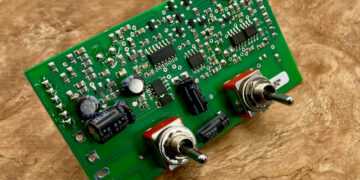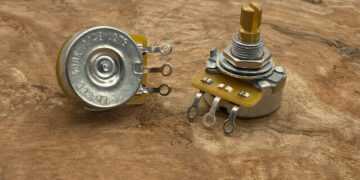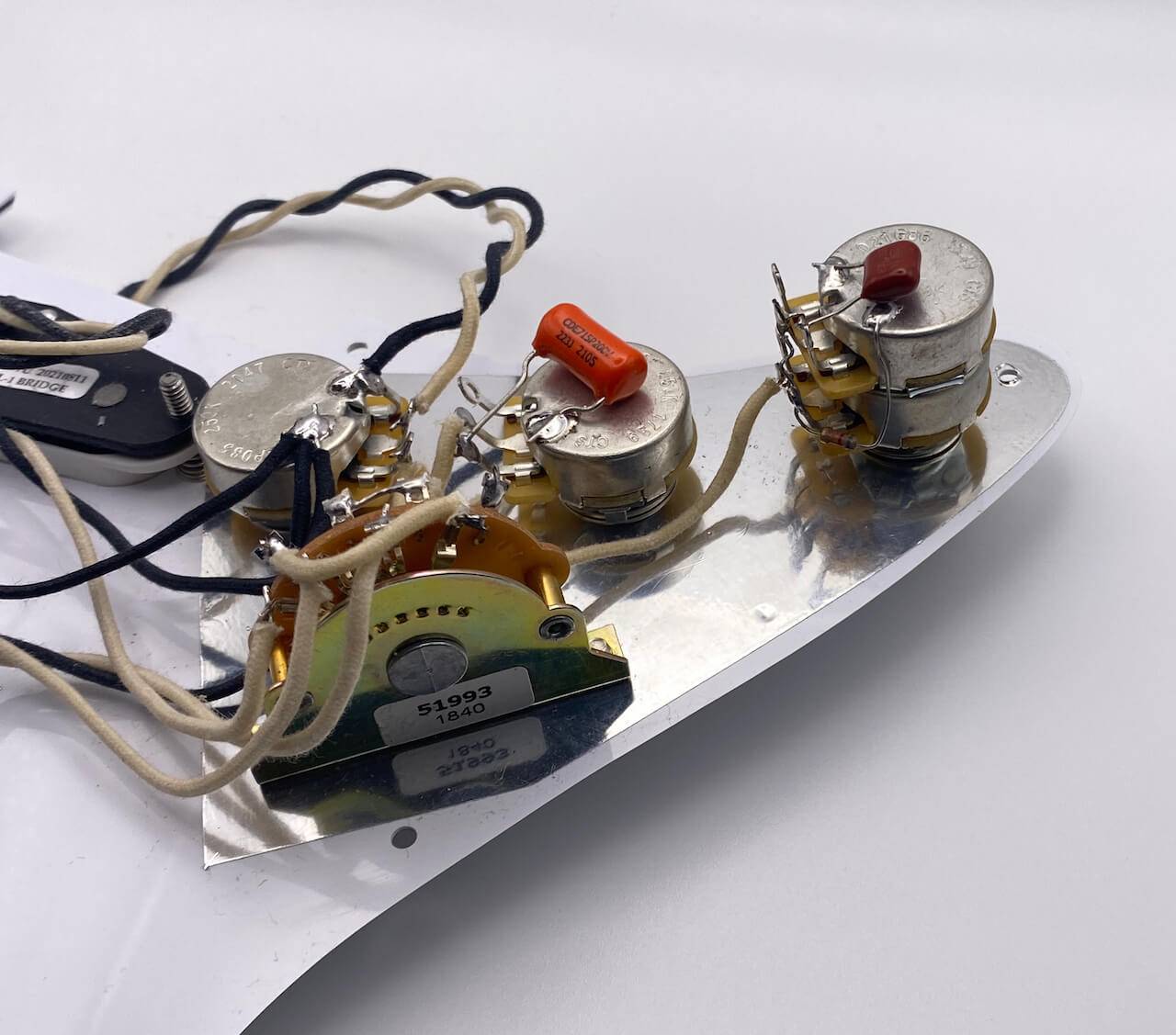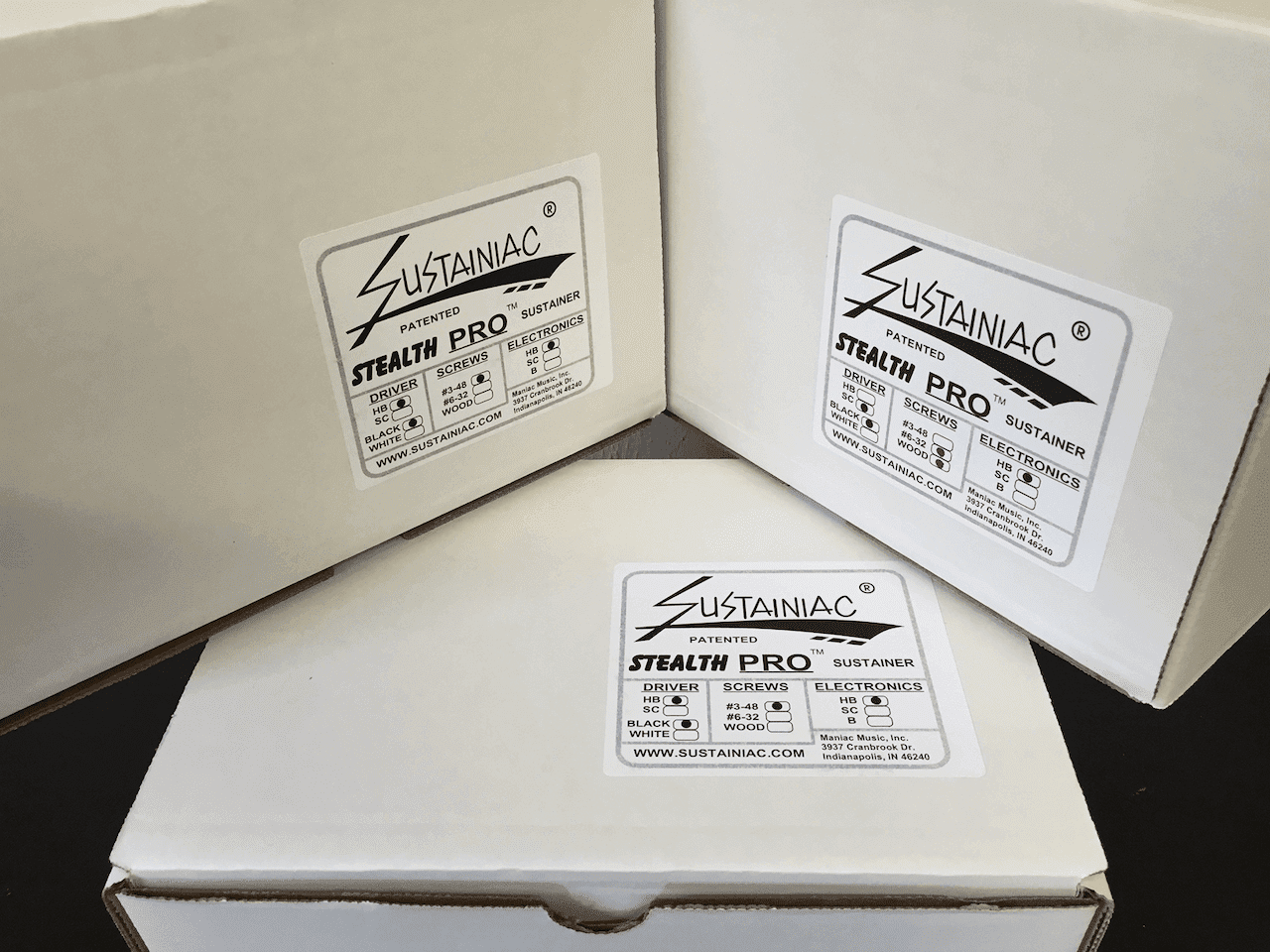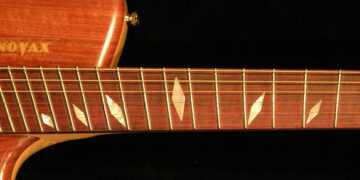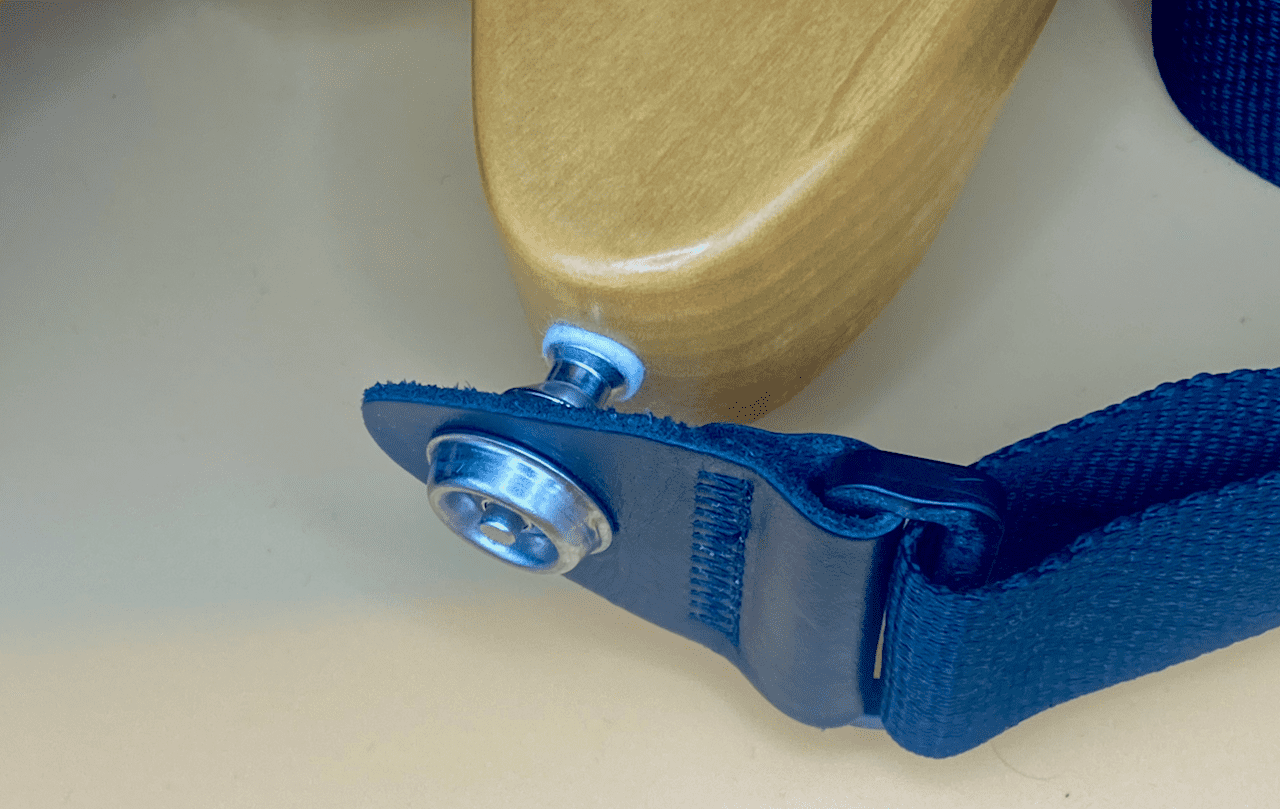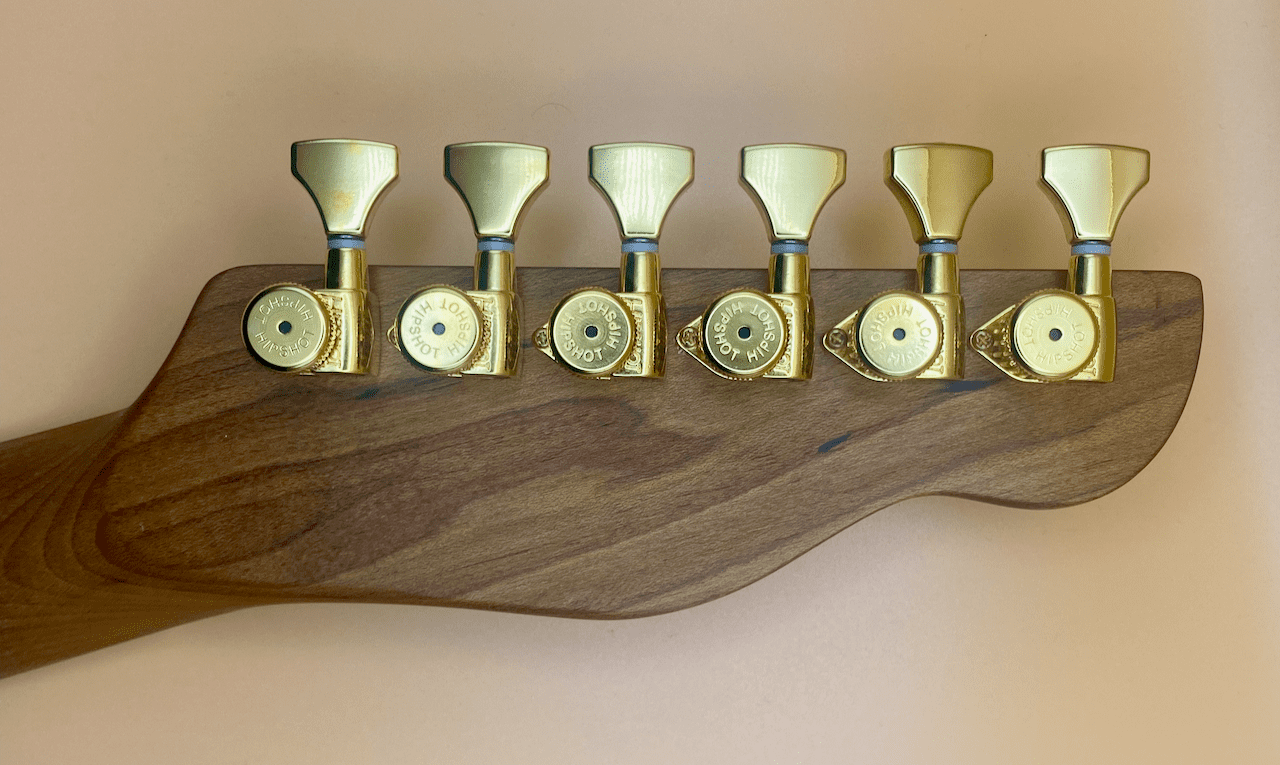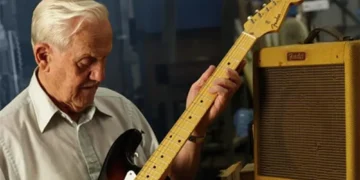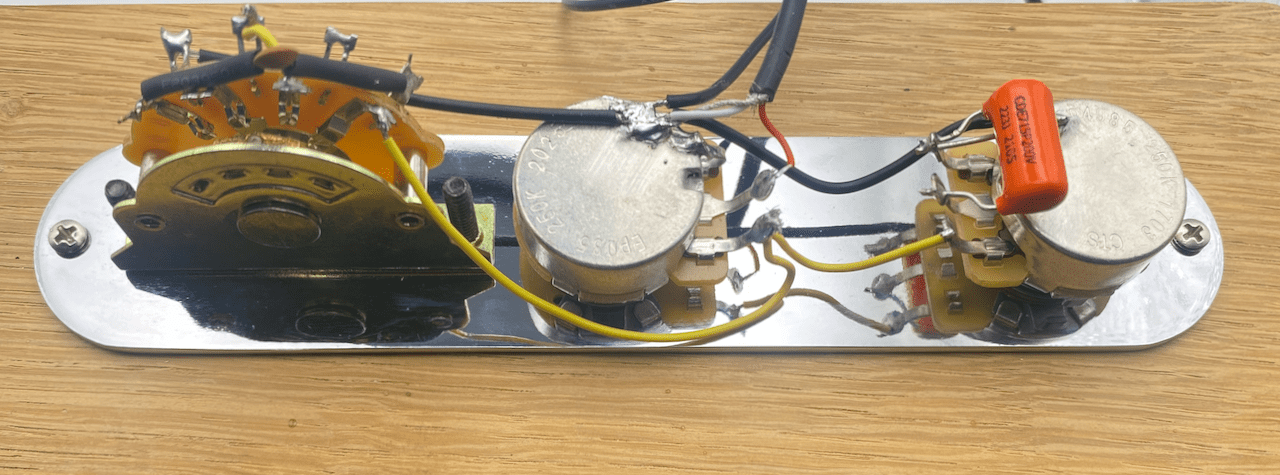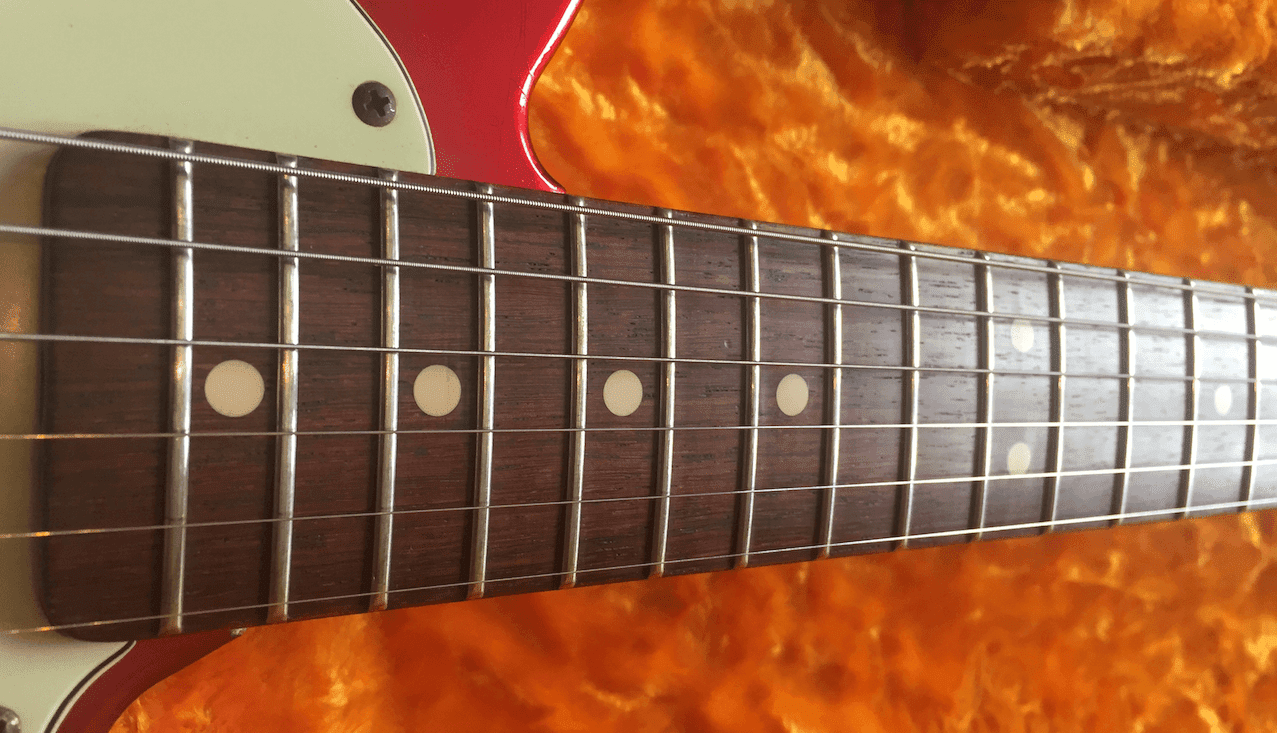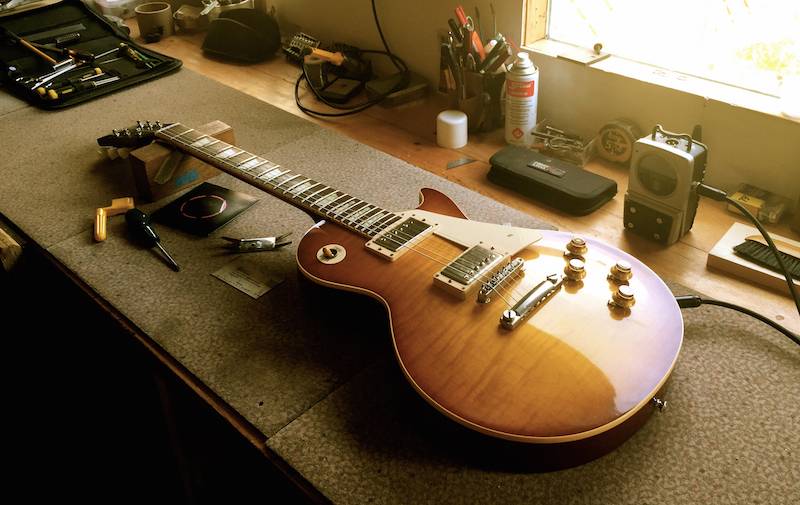The Fender Greasebucket circuit is another very popular mod for your guitar’s tone control.
Fender started adding this tone pot modification in 2005 to some of their Custom Shop models along with the Highway One series. The marketing behind Fender’s trademarked “Greasebucket” mod is slightly vague and misleading though.
There’s no documented evidence as to where the name came from, but this is fairly standard within Fender. The description can also lead players down the wrong path as to what this modified tone circuit is actually doing.
Fender states that:
“The ‘Greasebucket’ tone circuit adds a new dimension to your tone, the effect is that when rolled down, the tone pot reduces the high frequencies, but does not add bass.”
While this sound like an interesting mod to pursue, and many pro players over the years have sung its praises, the description isn’t 100% accurate. While it does produce a different effect when compared to the traditional tone circuit found in most guitars, it does not add bass frequencies.
As with all passive electronics, you are not actually ‘adding’ anything to the sound. All you are able to do is reshape the sound by adjusting certain frequencies. The effect of this is to make some frequencies seem more prominent than others.
If you attenuated out certain high frequencies then the lower frequencies that are left will seem more apparent. So in a standard tone circuit, when you roll off the high frequencies, the level of which is dependent on the tone capacitor fitted to the circuit, the bass frequencies will seem louder.
As with everything in the guitar electronics world, the results are purely subjective. Guitar electrical circuits form an RLC circuit ( a resonant circuit formed by the use of an inductor – in this case, the pickup, a resistor and a capacitor), which has a massive effect on the overall tonal characteristics of the instrument.
Some players like the way these components interact with each other. So would like to change things for a different result. Simply changing a pickup in your guitar can alter how the tone circuit will interact, just by altering the resonant peaks and valleys.
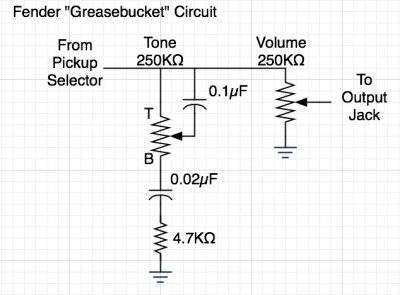
The main point of the Greasebucket circuit, and the reason it’s popular, is that it allows you to roll off the highs and balance out the lows without the sound getting muddy. This works very well for both shimmering clean tones and overdriven sounds.
In practice, this mod can be very specific to its position. Many players have found that while it works amazingly in their bridge Strat position, as well as position 2, their guitar’s lost their classic Strat neck tone.
The result of the Greasebucket circuit is that it can generate a very mid-focused push to the sound. Some pickups can deal with this, and the blend of the two worked very well. Others lose a lot of the classic Strat neck pickup tones that players require.
In the bridge position, the ability to roll off the highs and focus a more mid-range push rather than a bass-focused low end works really well, especially when overdriven.
Installing the 'Greasebucket' mod
Installing the “Greasebucket” mod into your existing tone circuit is quite straightforward. You don’t need a lot in terms of components and reversible if you decide it’s not for you.
In terms of components, we’ll stick with the Fender stock version for now. For this mod, you will need a 4.7K ohm 1/4 Watt resistor and a 0.1uF ceramic capacitor as well as the stock 0.022uF capacitor already installed in your tone circuit.
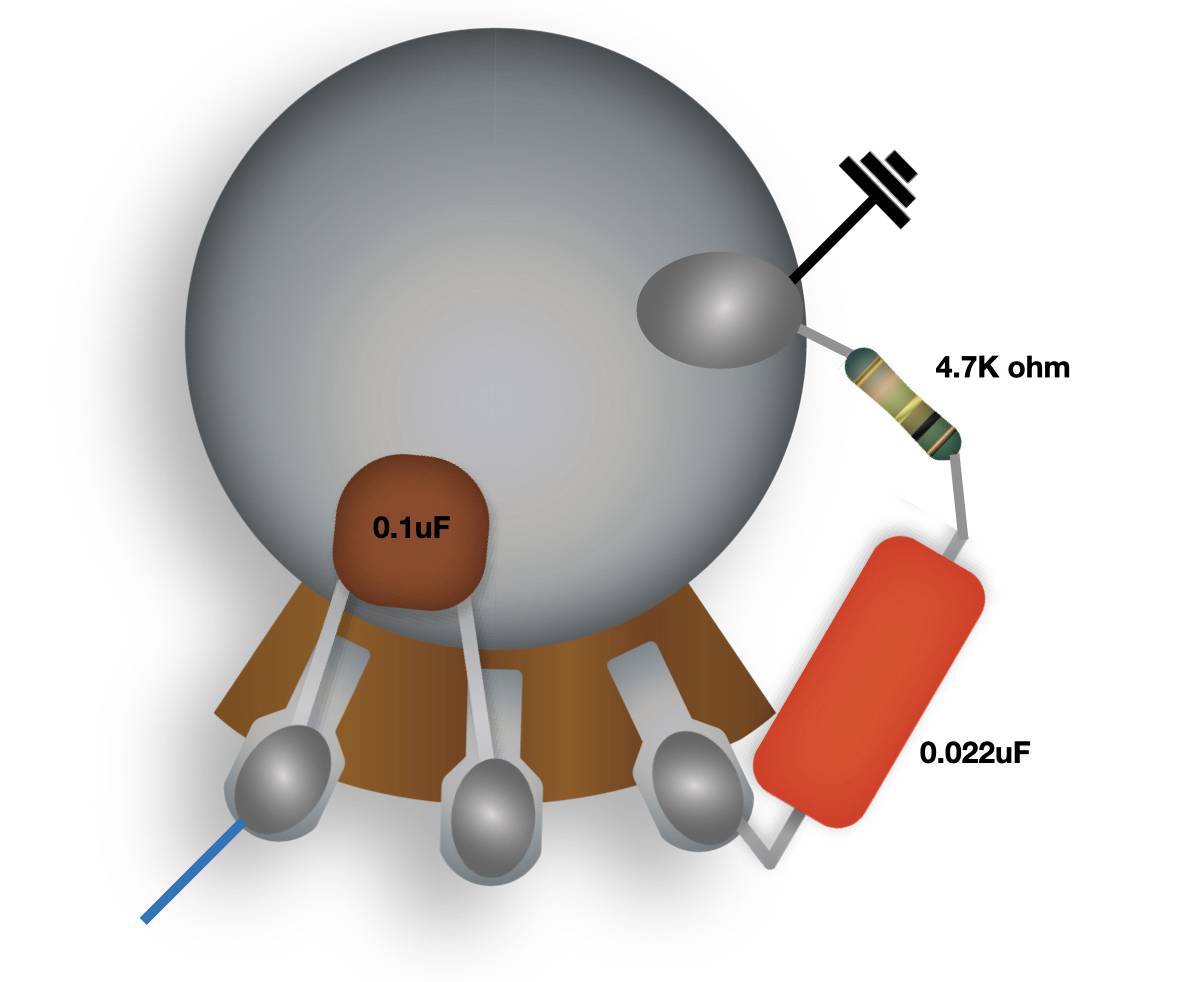
To install the mod all you need to do is unsolder your current tone cap and install the new components as shown in the picture.
The 0.022uF cap and the 4.7K resistor are wires in series, with one leg of the resistor soldered to ground. The 0.1uF capacitor is connected between the wiper lug and the same lug that your incoming signal wire is connected to.
How it works
The standard tone circuit in your guitar can be thought of as a low-pass filter. It allows only the low frequencies through while it stops the high frequencies and sends them to ground via the tone cap. The value of this tone cap dictates where the filtering of frequencies takes place. Or in other words; which band of frequencies are filtered out.
The “greasebucket” circuit can be thought of as a band-pass filter. It is a combination of a traditional low-pass filter and a high-pass filter. In Fender’s terms, this allows you to cut the high frequencies without ‘adding’ bass.
The ‘greasebucket’ circuit allows you to specify exactly how much of the low frequencies can be allowed to filter out. This makes the circuit much more flexible and allows you as a player to hear a much more balanced tone control through its operation.
The heavy lifting of this circuit is done by the 4.7K resistor wired in series with the 0.022uF cap and the back of the pot. The resistor prevents the signal value from reaching zero. It acts in the same way as if you were only able to turn your tone down to one, and never actually make it to zero.
The 0.1uF capacitor attached to the wiper creates an RLC circuit which we mentioned earlier. In short, the 0.1uF cap acts to filter specific high frequencies through the circuit. Working in the same way as a simple treble bleed circuit. We’ve covered treble bleed circuits in another article.
RLC circuits can get complicated, so let’s just think of it as a high-pass filter. The value of the cap determines the level of high-frequency filtering.
Modifying the mod
As with most guitar wiring, this circuit can easily be dialled to create a specific level of both high or low-frequency filtering. Adjusting values of either the resistor of either one of the capacitors will change the way the ‘greasebucket’ circuit behaves.
It is also very dependent upon which guitar you are fitting this mod to. For the majority of this article, we have been talking about the stock Fender use of this circuit, which is predominately fitting into three single-coil Stratocasters. But this circuit can be used with any pickup combination you like. But thanks in part to the RLC circuit properties of the ‘greasebucket’ mod, there are some changes that you were not expecting.
The volume pot, for example, can act slightly differently. You may find that the taper seems to be more aggressive than before. This is especially noticeable if you have a treble bleed fitted to your volume pot. For example, if your guitar is running single coils with a 250K volume pot, you may need to add something like a 260K ohm resistor in parallel with your treble bleed to balance things out. Similarly, if your guitar is running 500K ohm pots, you may want to try a 360K ohm resistor.
This is all to do with ‘tone shaping’. But if you think about it, it all makes sense. Within your guitar circuit running both a ‘greasebucket’ mod and a treble bleed, you have a low-pass filter and effectively two high-pass filters, both being affected by two variable resistors (your volume and tone pots).
It’s understandable that all these filters may start to overlap and affect each other to a greater or lesser degree. This is where the modification comes in. While these articles give you the basics, or stock setups for all these mods, you can alter them to fit your own ear.
So by all means try the ‘greasebucket’ circuit. It’s a really good upgrade to the traditional tone circuit that many players find really useful. Adding a different flavour to both clean and overdriven sounds. There may be some changes that you have to make depending on the configuration of your guitar or the pickups you are using, but ultimately you will find a sound that works for you.

